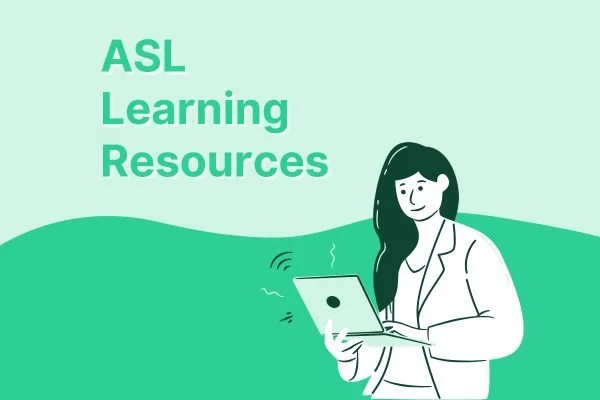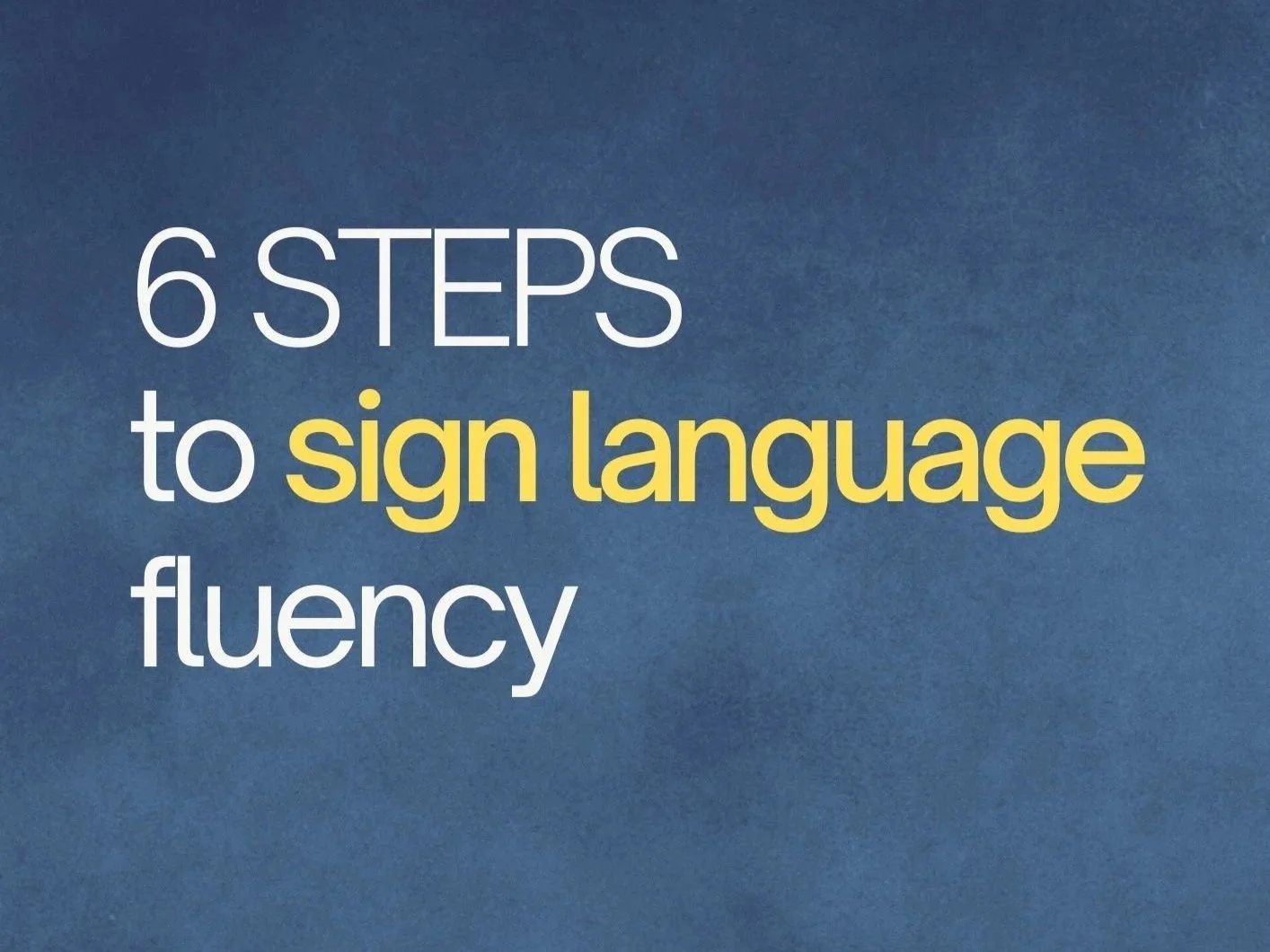
Be a part of a supportive community of thousands of learners.
Whether you’re just starting to learn ASL or looking to deepen your skills, here are three free resources to help you take the next step in your journey:
-

Practice Sessions
Learning is easier (and more fun) when you do it with others. Each week, you’re invited to join our free ASL group practice sessions, where learners at all levels come together to sign, share, and support one another in a welcoming environment.
-

Helpful Resources
Here is a collection of apps, videos, and podcasts designed to support your journey. These resources can help you practice consistently, strengthen your fluency, and explore Deaf culture at your own pace, giving you simple, accessible tools to keep you moving forward.
-

6 Steps to Fluency
Not sure where to begin? The 6 Steps to Sign Language Fluency offers a simple roadmap to guide your progress. It breaks the process down into clear, manageable stages so you can move from beginner to confident communicator with less guesswork.

Why Learn Sign Language?
ASL is one of the most widely used languages in the United States, with rich history and deep cultural roots in the Deaf community. Learning it doesn’t just open doors to new communication, it fosters inclusion, empathy, and meaningful human connection. By learning ASL, you gain not only a skill but also a perspective: the ability to connect with people in a way that goes beyond words.
Our Story
Our journey with ASL began in 2009, when my father-in-law started to lose his hearing. What could have been a moment of isolation instead became a turning point. As a family, we decided that if he was going to learn ASL, we would all learn it together. My wife, Johnni, and I, along with my parents and her parents, committed ourselves to the process — not just as individuals, but as a family united in the belief that language should bring us closer, not drive us apart.
That decision planted the seeds for everything that followed. What began as a way to communicate with a loved one grew into a passion for the language, the culture, and the community behind it. Over the years, Johnni and I deepened our studies, eventually working in the field of interpreting. Along the way, we gained not just skills but also friendships, stories, and a profound respect for the Deaf community.
Through those experiences, we discovered how powerful ASL can be — not only as a tool for communication, but as a bridge for connection. It’s a bridge we’ve walked across many times: in classrooms, at family gatherings, and in community practice groups. And it’s a bridge we’re now inviting others to walk across too.
Over the past decade, I’ve had the privilege of interpreting in classrooms and one-on-one with students, helping young learners find their voice — sometimes literally, sometimes through their hands. As an educator, I’ve seen how intentional, step-by-step learning can transform discouragement into confidence. I know what it’s like to watch someone go from “I’ll never get this” to “I can’t believe I just did that!”
Johnni and I have carried those lessons into our lives as parents, creators, and teachers. We’ve run free ASL practice groups to give learners a safe place to grow, built resources to make the path to fluency clear, and shared stories to remind people that mistakes aren’t failures — they’re stepping stones.
The Mission
My approach to teaching ASL combines the practical experience of years spent interpreting with the mindset of an educator who believes that learning should be both accessible and sustainable. I draw on a background in education and interpreting to create strategies that are not only effective in theory but also proven in practice, giving learners the confidence that they’re supported by someone who has walked this path before them.
At the same time, my passion is fueled by the people I’ve had the privilege to connect with. I’ve seen a child’s face light up when they realize they can finally express themselves, and I’ve witnessed families feel less isolated because they now share a language that bridges the gap. These moments remind me that learning ASL isn’t simply an academic pursuit — it’s a deeply human one.
Research also makes it clear that fluency doesn’t come from rushing or cramming, but from small, consistent steps practiced over time. That’s why I emphasize building habits of clarity, consistency, and connection. When learners understand the “why,” practice in manageable ways, and stay rooted in community, they not only grow in skill but also in confidence and belonging.
At its core, my mission is to help people move beyond memorizing signs to building meaningful connections. Learning ASL is about more than vocabulary; it’s about respect, inclusion, and creating bridges where there were once barriers.
Your Next Step
Whether you’re joining a practice session, exploring free resources, or following the 6 Steps to Sign Language Fluency, you’re not just learning signs — you’re learning to connect. And connection, after all, is the point.